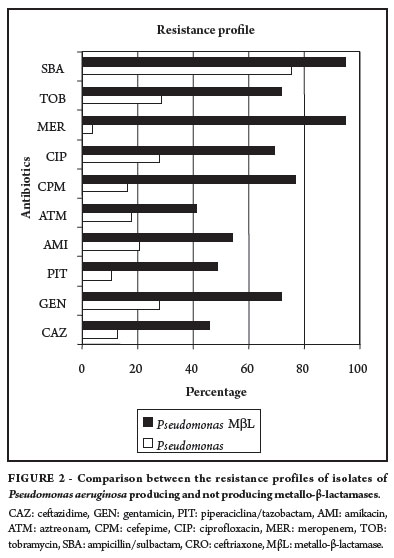INTRODUCTION: The main mechanism of emerging resistance in Pseudomonas aeruginosa and Acinetobacter sp. isolates is the production of metallo-β-lactamases (MβLs). MβLs are enzymes capable of hydrolyzing cephalosporins, penicillins and carbapenems, but not monobactams (aztreonam), which are often used as antimicrobial therapy to treat nosocomial infections. METHODS: An observational descriptive and retrospective study was designed to assess the frequency of MβLs among strains of P. aeruginosa and Acinetobacter sp. obtained from a tertiary hospital in southern Brazil. RESULTS: MβL production was observed in 77.6% (n = 173/223) for P. aeruginosa isolates and 22.4% (n = 50/223) of Acinetobacter sp. isolates. The Acinetobacter sp. isolates showed 92.8% sensitivity to amikacin and P. aeruginosa isolates showed 58.9% sensitivity to aztreonam. CONCLUSIONS: The MβL indices determined confirm the global concern with this mechanism of resistance.
MβL; Bacterial resistance; Pseudomonas aeruginosa; Acinetobacter



